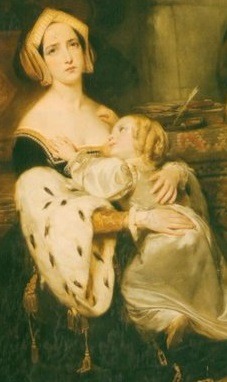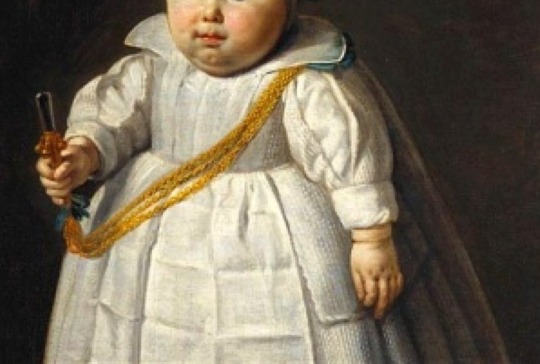

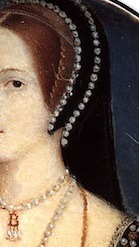 On April 26th, 1536, Anne Boleyn asked her chaplain, Matthew Parker, to meet with her. She had a special request to ask of him, something of utmost importance. Perhaps she had a premonition of some sort.
On April 26th, 1536, Anne Boleyn asked her chaplain, Matthew Parker, to meet with her. She had a special request to ask of him, something of utmost importance. Perhaps she had a premonition of some sort.We know little of what took place during this meeting, only what Parker himself wrote of it later. Anne Boleyn asked him to make a promise to her, and Parker spent the rest of his life trying to fulfill it.

The records indicate the weather in spring of 1536 was lovely, but Anne could feel the dark clouds gathering around the throne. A storm was brewing, but the conspirators were careful to leave little trace of which direction they were heading. Anne Boleyn was a fighter, but she could not fight what she could not see.
The courage and strength it took for her to behave as though everything was normal still amazes me. Anne went through the motions of being a Tudor queen with dignity and poise. The king, too, gave all outward appearance of normalcy.
Though Henry was spending his nights in other palaces - where Jane Seymour was always lodged nearby - he appeared at Anne's side for events, and they were able to present the image of a cordial relationship to the public. He dined in Anne's apartments, went with her to mass, and still insisted foreign courts should recognize the legitimacy of his marriage. He even devised a bizarre ruse to force Eustace Chapuys into bowing to Anne, seizing the underhanded victory with apparent delight.
But behind the scenes, Henry was devising a way to rid himself of the woman he had come to despise. As he stood smiling by her side, he was plotting her death.
Anne had to have known Henry was trying to get rid of her. If we know about it - and we do, from the letters of Chapuys to the Imperial court - then Anne heard the gossip, too. She still had powerful supporters who kept her informed of what was going on.

Anne had to have been terrified, sick with worry and anxiety. What was Henry planning? It looked like he was trying to find a way to annul their marriage. He was asking bishops about the validity of his union to Anne. It had gotten to the point where Princess Mary's supporters were writing to her and telling her to be of good cheer, because Anne would be gone soon.
 On the 21st of April, Chapuys noted as an aside that Cromwell had told the French ambassador not to broach the topic of Princess Elizabeth's marriage. Anne, who supported the French, must have been disturbed that there was no discussion of a marital alliance for the princess. Whatever was happening, it was affecting her beloved daughter, as well.
On the 21st of April, Chapuys noted as an aside that Cromwell had told the French ambassador not to broach the topic of Princess Elizabeth's marriage. Anne, who supported the French, must have been disturbed that there was no discussion of a marital alliance for the princess. Whatever was happening, it was affecting her beloved daughter, as well.On the 24th of April, a commission of Oyer and Terminer was created at Westminster. The court dealt with treason charges, and other serious crimes, and so Anne may have thought it was for someone who had denied the royal supremacy, assuming she knew about that it had convened. She had so many other things on her mind, she might not have given it a second thought.
The commission was tasked with investigating and drawing up the indictment against Anne Boleyn for treason and adultery. The day after the commission was created, Henry wrote a letter referring to Anne as his "entirely beloved" wife. The wife he had already decided would have to die in order to ensure his marriage to Jane Seymour was unchallenged, and his heir with her was entirely legitimate. Even as Henry wrote those words, he knew Anne Boleyn would be dead before the letter arrived at its destination.
 Anne’s days were numbered, though she was unaware of it as yet. She knew something was coming, at any rate, and Anne Boleyn was a woman who tried to meet her problems head-on.
Anne’s days were numbered, though she was unaware of it as yet. She knew something was coming, at any rate, and Anne Boleyn was a woman who tried to meet her problems head-on.On the 26th, she asked her chaplain, Matthew Parker, to meet with her. Though we don’t know the details of how the meeting was arranged, Anne would have wanted it to be private. She had a promise she wanted to extract from him, and she wouldn’t have wanted it to be overheard.
It seems she was successful at keeping it quiet - no one else, including Chapuys, whose ears were always straining for the faintest sounds of gossip, reported on it. Perhaps she met with Parker under the guise of confession, the sanctity of which even Chapuys would have never dared violate.
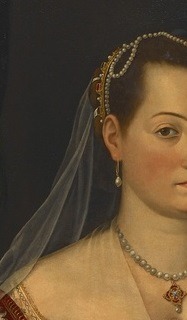 Anne asked Parker to promise her he would watch over her baby daughter, Elizabeth, if anything happened to her. She must have seen something in Parker that made her reach out to him - of all the people she could have contacted, including her own extended family - to safeguard Elizabeth and her future.
Anne asked Parker to promise her he would watch over her baby daughter, Elizabeth, if anything happened to her. She must have seen something in Parker that made her reach out to him - of all the people she could have contacted, including her own extended family - to safeguard Elizabeth and her future.Parker took the promise he made to Anne seriously, and considered himself bound to it for the rest of his life.
 Anne Boleyn was an amazing woman. She managed - somehow - to behave as though nothing were amiss. She performed her court duties, attended mass, even continuing to insist on proper decorum for her courtiers. Anne always managed to keep her composure in public; it was only behind the scenes that she broke down. We don't have any records of her inner turmoil at this time.
Anne Boleyn was an amazing woman. She managed - somehow - to behave as though nothing were amiss. She performed her court duties, attended mass, even continuing to insist on proper decorum for her courtiers. Anne always managed to keep her composure in public; it was only behind the scenes that she broke down. We don't have any records of her inner turmoil at this time.Only the letters of the courtiers and Anne’s privy purse expenses give us insight into what was happening. Anne spent the last weeks of her life ordering items for her daughter. Perhaps, psychologically, Anne was trying to “cover” her daughter as best she could with all of her clothing purchases for the child. Maybe she had the foresight to see Elizabeth would be plunged into reduced circumstances by whatever her father was planning and not be cared for according to her station.
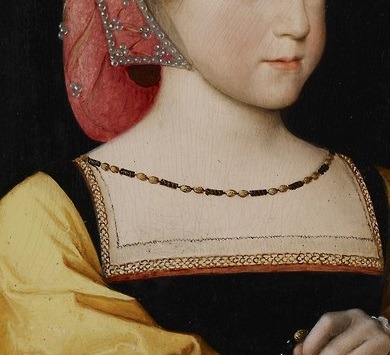
Anne was right - it was the last clothing Elizabeth would receive until her governess wrote a pleading letter begging for funds because Elizabeth had grown out of everything.
Anne had done all she could to prepare Elizabeth for her uncertain future. She had filled Elizabeth’s household with loyal, supportive people, many of whom were extended family members. She had asked a powerful man in the religious reformist movement to protect Elizabeth, and she had dressed her baby warmly for the storm ahead.
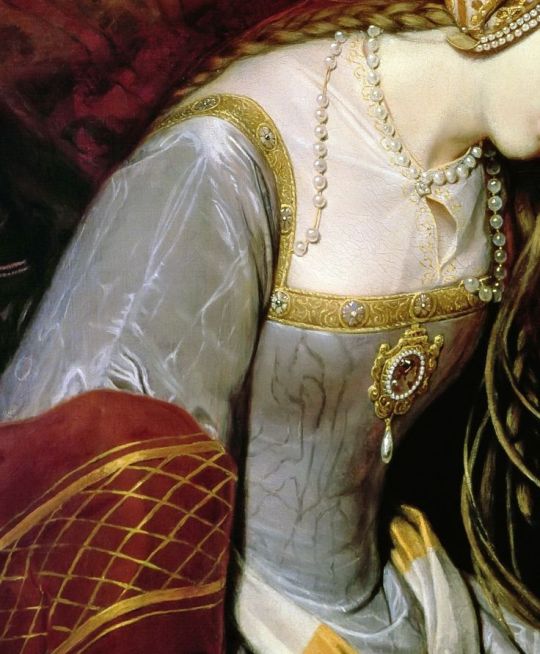 Anne walked these last days of April on tenterhooks, waiting to see what Henry had in store for her. She would not have long to wait.
Anne walked these last days of April on tenterhooks, waiting to see what Henry had in store for her. She would not have long to wait.

